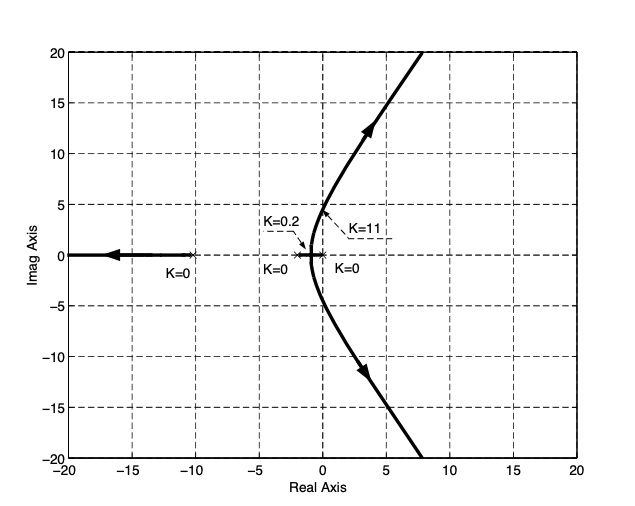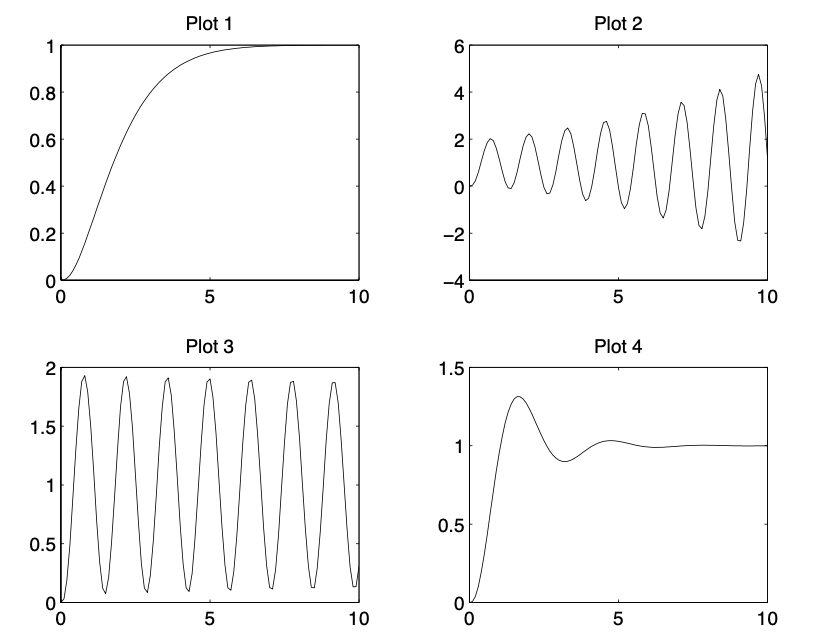Exercise 2.1#

Fig. 5 Root Locus plot#
We want to design a proportional controller for a tooling machine. In the Root Locus plot, the poles of the closed-loop system are drawn as a function of the controller gain \(K\).
Use the Root Locus plot to specify what values of \(K\) have been used to generate the step responses depicted in the figure below.

Fig. 6 Closed-loop step responses#
Solution#
Plot 1 corresponds to an over-damped closed-loop response, as no oscillation is visible. This implies that the closed-loop poles are real-valued. Looking at the Root Locus plot, the closed-loop eigenvalues are negative real-valued for \(0 < K \leq 0.2\).
Plot 2 depicts an unstable and oscillatory closed-loop response, meaning that the closed-loop poles have a large imaginary part and a positive real part. From the Root Locus plot we can see that this is the case for \(K > 11\).
Plot 3 depicts a marginally stable closed-loop response, i.e., the closed-loop poles have null real part. Therefore, this case corresponds to \(K = 11\).
Plot 4 showns a stable, but oscillatory, closed-loop response. The dominant closed-loop poles are complex conjugate. This case corresponds to \(0.2 < K < 11\).
